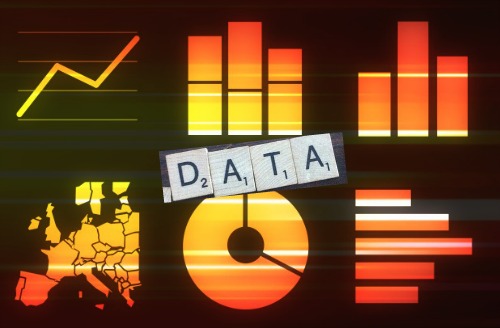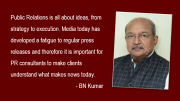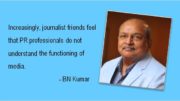How many times the PR professionals have heard from the media that their press release is a little bland? Doesn’t your release lack a bit of substance? The story is not that interesting, and it should have some numbers and figures in it. How can we write about it in a prominent way without enough data? So, statistical correlations, numbers, data, growth percentages, would always make for great headlines making the impact of the news stronger in the context it is being shared.
A journalist’s mind is always an analytical one. It simply loves to deal with finding out what is beyond the obvious. It tries to understand to see through the story and not just look at it before using it for publication. It wants to know more about the “how” part of the narrative being presented in the release. It enjoys diving deep to assess the authenticity of the story by analysing, probing, questioning, and investigating the story further, more often than not.
Whether the story is about social impact over a city, state, country, race, tribe, religion or it is about the economic impact over the citizens of a country or the whole of the world if it is data-driven, it is considered to be most newsworthy. Employment numbers, GDP, inflation, healthcare issues like diseases and pandemics, all make good stories with their data-heavy nature in the media most of the times.
While assessing the data, it is the authenticity of the data that takes a centre stage in the minds of the journalists. Many times, they even question official data released by the Governments, if they believe there is some sort of inconsistencies are visible. And why shouldn’t they, as their stories based on this data will create perceptions and build opinions. Sometimes, how the data is presented also makes one question the authenticity of the story. Absolute numbers and percentage talks can be sometimes misleading unless they are correlated well. An appropriate visualisation of this can help media bringing out the most accurate and balanced story.
Another part of dealing with data is about accuracy. Remember, data calculation is all mathematics. All research studies or statistical outcomes are usually accurate to specific decimals and they need to be presented like that.
Imagine a statement that “amount of malnourished children in so and so locality is almost 9%” compared with another statement that says “amount of malnourished children in the age bracket of 3 to 7 years in so and so locality is 8.88% and has decreased by 15.35% on a Y-o-Y basis.” Accuracy makes all the difference and one can communicate the real issue much better. If it’s a campaign, one can present the initiatives undertaken, outreach achieved, impact delivered in an extremely effective manner paving the way for planning the road ahead.
Moreover, data allows journalists in enhancing their storytelling. Infographics and imagery with numbers help to deliver the news in an impactful manner. Newsrooms today engage data scientists and researchers who deal with the sheer scale and size of data and information available today in order to create the most newsworthy stories.
With artificial intelligence making its way into our lives, data journalism is becoming an important aspect for media in shaping their stories. If the data is available in a structured manner, algorithms can make the best use of it to analyse and predict trends/results for media content. Machine learnings and automation will also have a play in how stories are developed in the days to come.
Essentially, appropriate use of data by journalists can help bring out deep insights into the stories and therefore it becomes one of those crucial initiatives that brand communicators can take to enhance their campaigns.
The views and opinions published here belong to the author and do not necessarily reflect the views and opinions of the publisher.







Leave a comment